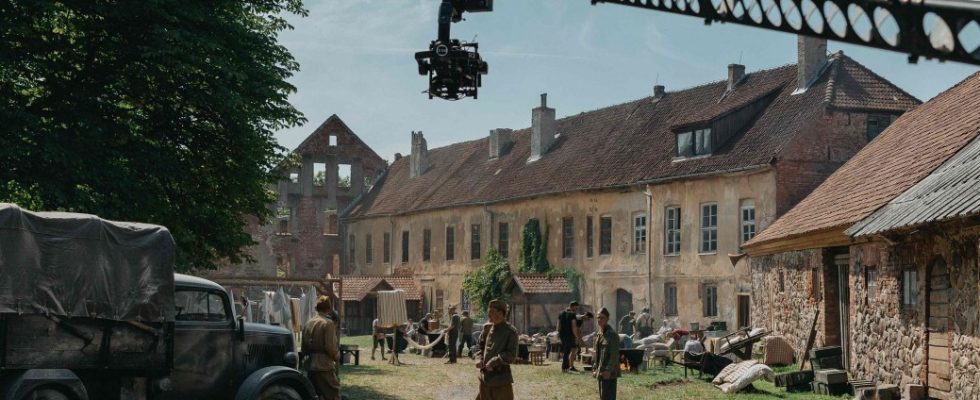Berlin is sometimes relocated to Russia, and Sweden with its beaches and dunes is also there from time to time. Illusions, produced in Kaliningrad. The old villa on Kutusow Street, semicircular bay window, window crosses – it could also be Hamburg. Or the white single-family house in Polessk, Kaliningrad district, with the pointed roof, the red roof tiles and the wide dormer: as if it were in Bavaria, on the Upper Rhine, in the Hunsrück.
Kaliningrad, the city and its surrounding area, is a Russian exclave on the Baltic Sea. Surrounded by Poland and Lithuania. For Russia it is a cinematic biotope, with many variations in a small space. There are blooming rapeseed fields and the beaches of the Curonian Spit, Soviet prefabricated buildings and pre-Soviet half-timbered houses, Art Nouveau villas, alleys and churches, harbor facilities and castle ruins. Half of Europe could be staged there. And that’s exactly what Russia is doing.
The Russian exclave on the Baltic Sea has become a kind of surrogate Europe for the film industry
Sure, Moscow has its Mosfilm studios. But more than ever, the Russian film industry is drawn to Kaliningrad. Russia’s war against Ukraine and the European Union’s sanctions are accelerating the trend. Because European filming locations have been blocked since then. This year, for example, the Russian television series “DDR” was completed, which takes place in Berlin around the time of the fall of the Berlin Wall. According to the original plan, exterior shots were also supposed to be taken there. After the war against Ukraine began, this was no longer possible. Europe has essentially closed the door, one of the producers, Yuriy Sapronov, told AFP journalist Marina Lapenkova. With its mix of Soviet and German buildings, Kaliningrad “perfectly” filled the gap for West and East Berlin.
Kaliningrad, the former Königsberg, the westernmost major city in Russia, was the backdrop for Russian films even during Soviet times. Not only, but also because of the preserved architecture from previous centuries, the gates, old buildings, the cathedral. Recently, however, the Russian Baltic Sea region has grown significantly as a hotspot for domestic films. This is mainly due to government funding. Russia is isolated in Europe and therefore has to rely on its own productions when it comes to films. Russian cinemas have lost a lot of money because of the canceled distribution of Hollywood productions. You now have to fill the space differently. According to a report by the Moscow Times Moscow doubled its financial aid to the Russian cinema industry to $160 million last year.
In the past five years, 44 feature films and series have been filmed in the Kaliningrad region, and the number has continued to rise since the start of the war. Currently there are even ten to 25 per year, said Olga Akopova, head of the Kaliningrad organization “Festival Directorate”, a regional news portal. Kaliningrad Culture and Tourism Minister Andrei Yermak said his region had become the “ultimate European set” in Russia. He also created a list of the most important “Lokeischns”. The 2022 film drama, “Plakatj Nelsja”, “You may not cry”, takes place largely in Scandinavia. The cameras and the tears were rolling on the Russian Baltic Sea coast.

